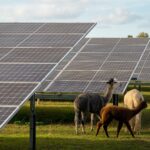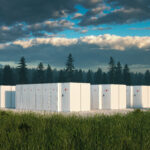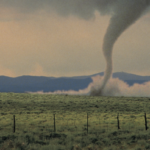In the realm of solar energy endeavors, the initial exchange between a developer and a landowner carries more significance than one might think. It’s a moment where potential takes shape, as the developer’s letter to the landowner not only outlines the potential earnings from leasing the land for solar development but also underscores the commitment to a mutually beneficial partnership.
Delving into the intricate dance of economics, this blog uncovers the key factors that weave into project profitability, dictating the proposals a developer extends to a landowner.
Local Market
Location is one of the most important factors in valuing a development. Some states offer incentives for green energy development, including tax credits. Federal programs also offer tax credits and solar renewable energy credits, which are very valuable, especially in states committed to increasing their renewable energy investments.
Location also factors into scarcity, which increases value. In areas with high population density, there is generally less available rural acreage; that acreage is also in demand as residential or recreational property, so landowners in these kinds of areas receive higher offers. Additionally, the land’s proximity to the nearest substation factors in, since parcels that are closer to substations lower costs for developers.
If the local area has restrictive zoning or land use issues, or requires extensive environmental impact studies, the project will be more expensive and take more time to develop, making parcels less valuable to developers.
Type of Project
Size can make a difference in how high the offer for the land parcel is. Distributed Generation (DG) projects are smaller projects, usually 5 – 50 acres in size. These smaller projects generate power to a substation that provides electricity to residential neighborhoods and are located close to the community they serve. As a result, these projects are more lucrative and developers will often offer landowners a higher lease rate for these projects.
Transmission Scale projects are bigger projects (200+ acres) that feed into high-tension lines to distribute larger amounts of energy over longer distances. Utilities tend to negotiate discounted rates for this energy, so these projects are slightly less profitable for developers, resulting in a more limited offer to the landowner.
Environmental Factors
While the number of available acres is important, every site has features that make it easier or more difficult to design an efficient grid of solar panels. Land that is prone to flooding, unsteady, sloped, or hilly is more challenging for developers.
Land with many obstructions that need to be removed, such as trees, bushes, or debris, will also make development more expensive and impact the offer a developer is willing to make to a landowner.
Local Utility and Other Buyers
Finally, the developer must negotiate terms for the sale and transmission of the power generated by the project. The developer files an Interconnection Application with the local utility – this is the agreement that shows the developer how much interconnection will cost them if they build the project, and ultimately allows them to model the project’s feasibility. The approval process can take up to two years.
At the same time, the developer is negotiating a Power Purchase Agreement (PPA) with either the utility or another power buyer who would be buying the clean energy through Renewable Energy Credits (RECs).

All these factors go into the offer a developer makes for your land. Your decision to lease will be based on comparing how much you’re earning per acre currently and what other options you have for selling or leasing the land. According to Clay Cooper, a Director of Land Acquisition for Scout Land Consultants, “Most landowners realize three to four times more earnings per acre from a solar development lease than they do from cash crops. Of course, if the land is sitting vacant, the solar development will provide significant revenue where there is none now.”
To discover how much your acreage might be worth, use our solar calculator, a complimentary tool built my our team of land experts. Scout Land Consultants has negotiated over 1,000 land agreements and acts as an intermediary between developers and landowners to the benefit of, not only the parties involved, but to the community and environment as well.






